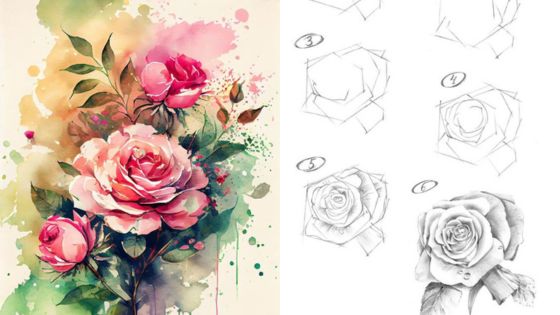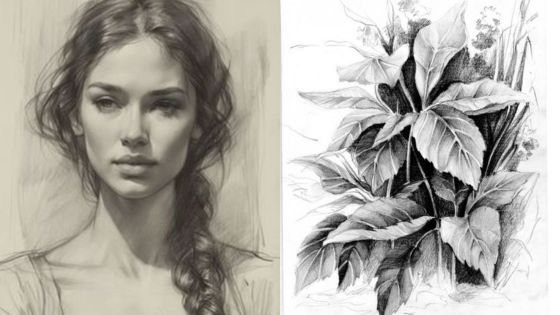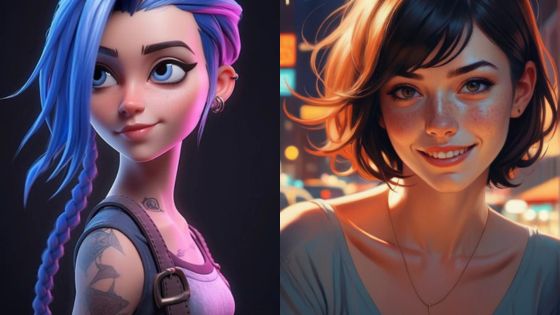Exploring body drawing ideas can be both inspiring and rewarding for artists at any level. With a variety of poses and styles, artists can enhance their skills and creativity. This article presents 10 body drawing ideas that can help spark inspiration and refine technique.
Engaging with different drawing concepts allows artists to experiment with form and movement. Each idea encourages exploration of anatomy, poses, and personal style. Whether one is a beginner seeking guidance or an experienced artist looking for fresh challenges, there is something valuable in each suggestion.
Hands in Different Positions
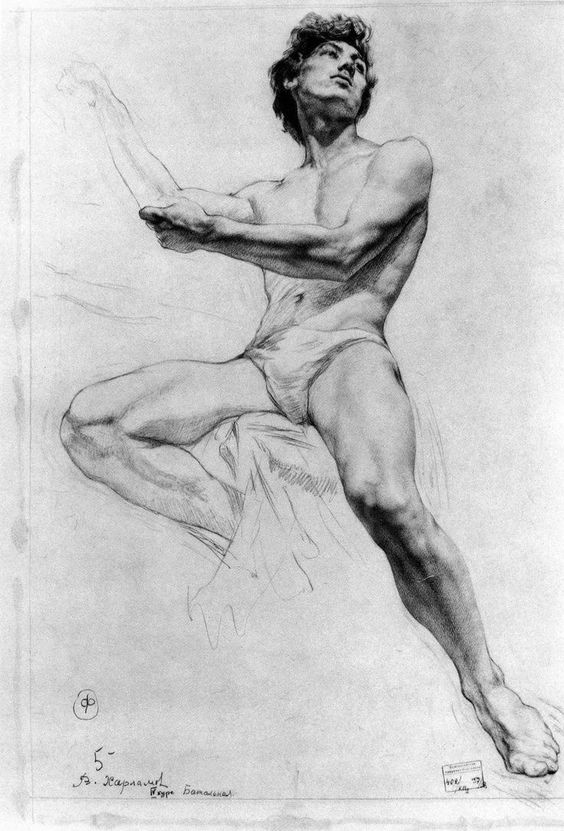
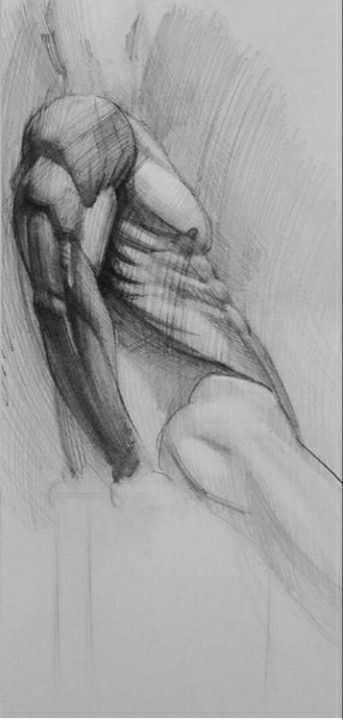
Drawing hands in various positions can enhance the expressiveness of art. They convey emotion, action, and relate closely to the overall composition.
Artists can explore different angles, such as hands reaching out, resting on a surface, or gesturing. Each position tells a story, whether inviting interaction or suggesting contemplation.
Practicing various hand poses helps in capturing the complexity of human gesture. This exploration can include clenched fists, open palms, or fingers in delicate poses.
Experimenting with perspective is also beneficial. Drawing hands from above or below challenges the artist’s skills, creating a dynamic element in the artwork.
Understanding anatomy is key. Observing how the fingers bend and the way the wrist moves can bring more realism to drawings.
Hands are powerful tools for communication. They can represent a range of feelings, from joy to sorrow, making them essential for storytelling in art.
2. Feet and Shoes
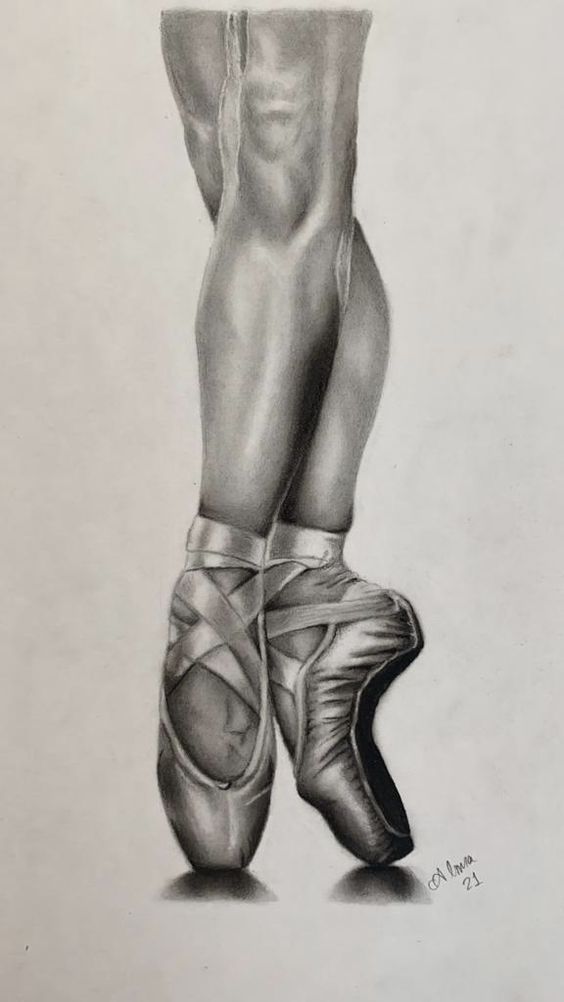
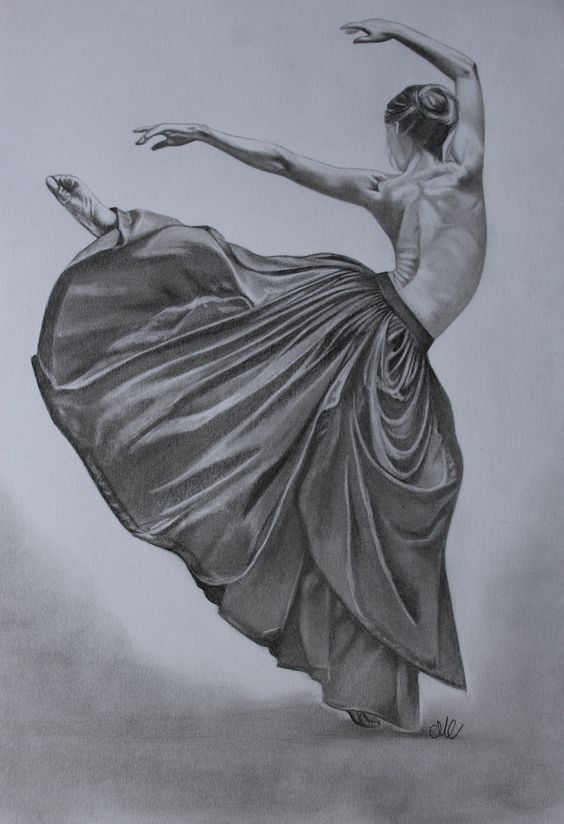
Feet and shoes play an essential role in figure drawing. They provide a foundation for the entire body. Artists can express character and style through various footwear designs.
When drawing feet, it’s important to capture their proportions. Observing the shape and position helps convey movement and balance. Simple shapes can be a good starting point.
Shoes add personality to a drawing. Different styles, such as sneakers, heels, or boots, reflect individual tastes. They can showcase different cultures or fashion trends.
Attention to detail enhances the realism of feet and shoes. Elements like laces, textures, and shadows can bring a drawing to life. Experimenting with color and patterns can also add interest.
Incorporating feet and shoes into body sketches can convey different emotions. For instance, a relaxed stance can suggest comfort, while a poised position might indicate confidence. Understanding these nuances can enrich the overall composition.
3. Various Poses Using Reference Photos
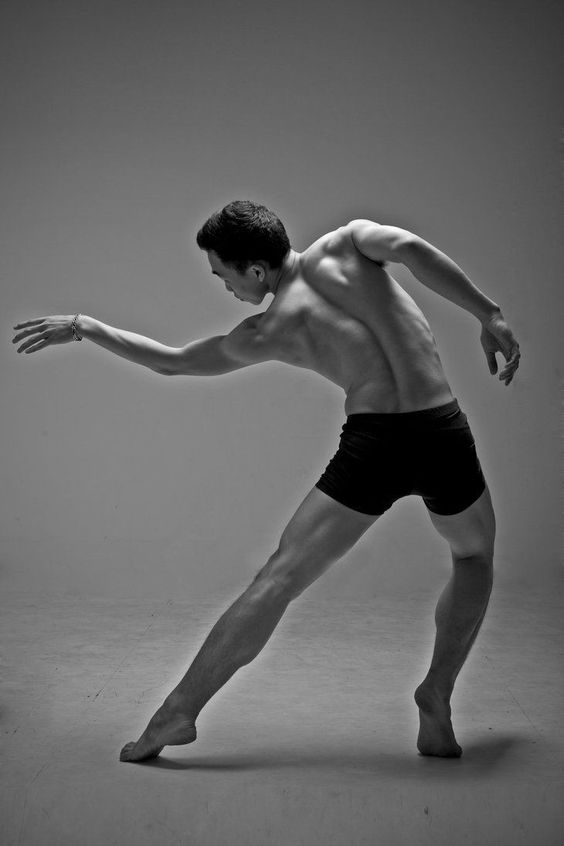
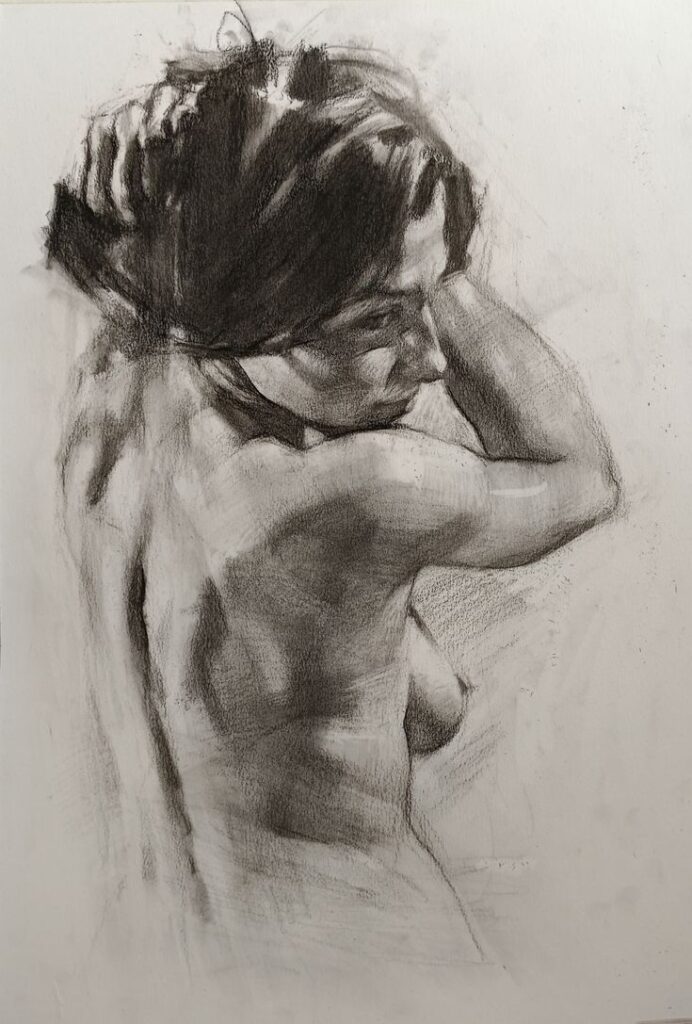
Using reference photos can significantly enhance the ability to capture dynamic poses. Artists often find inspiration by studying images of models, dancers, or athletes. These photos provide insight into body mechanics and natural movements.
When selecting reference photos, consider different angles and perspectives. A single pose can vary dramatically based on the viewpoint. Experimenting with various angles can lead to unique interpretations.
It’s helpful to analyze how light interacts with the body in photos. Shadows and highlights can reveal form and muscle definition. This understanding aids in creating more realistic drawings.
One approach is to create a series of sketches from a single reference photo. This practice allows for exploration of movement and expression. Artists can also modify the poses, adding their personal touch.
Incorporating a variety of reference sources can keep the drawing process exciting. This approach encourages creativity and innovation, making it easier to overcome artist’s block. Engaging with diverse references ultimately enriches the artwork.
4. Dynamic Action Scenes
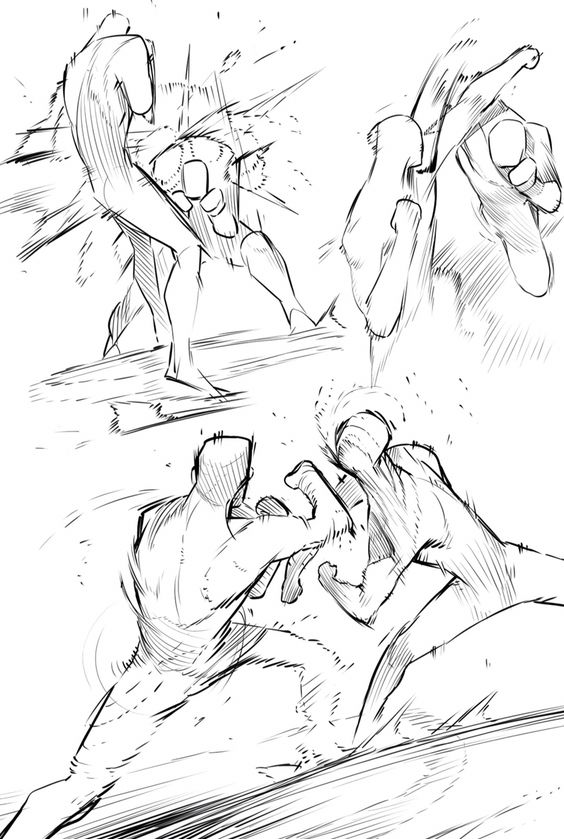
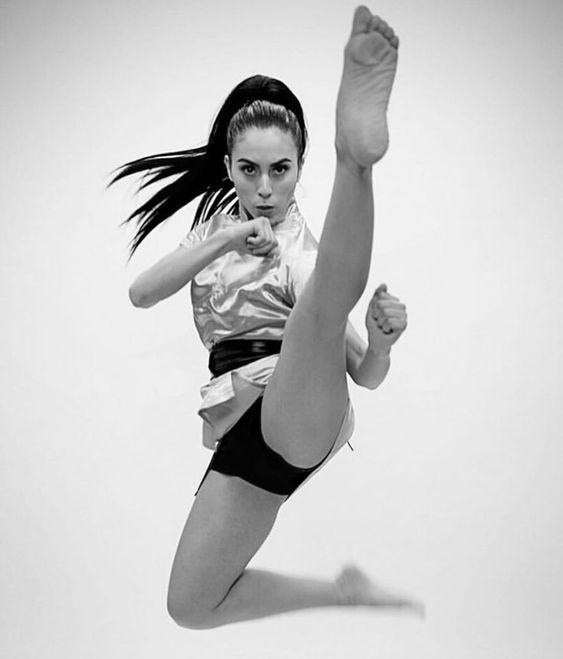
Dynamic action scenes are exciting and visually engaging. They capture movement and energy, making them a fun challenge for artists.
To illustrate action, artists can emphasize the poses and angles of the body. Low angles can make characters look more powerful, while high angles can create a sense of vulnerability. The choice of perspective can greatly influence the scene’s impact.
Incorporating motion lines helps convey movement. These lines guide the viewer’s eye and suggest speed. Quick gestures or exaggerated movements capture the essence of action.
Another technique involves using dramatic body language. Tension in muscles and expressive facial features convey urgency and emotion. These elements engage the viewer and make the scene feel alive.
Dynamic action scenes also benefit from careful composition. Placing characters in interesting positions can create a sense of chaos or excitement. Using contrasting colors can enhance the visual impact and draw attention to key elements.
Experimenting with different styles can also add flair. Artists can choose to render scenes realistically or adopt a more stylized approach. Each choice contributes to the overall effect of the action scene.
5. Body with Different Clothing Styles
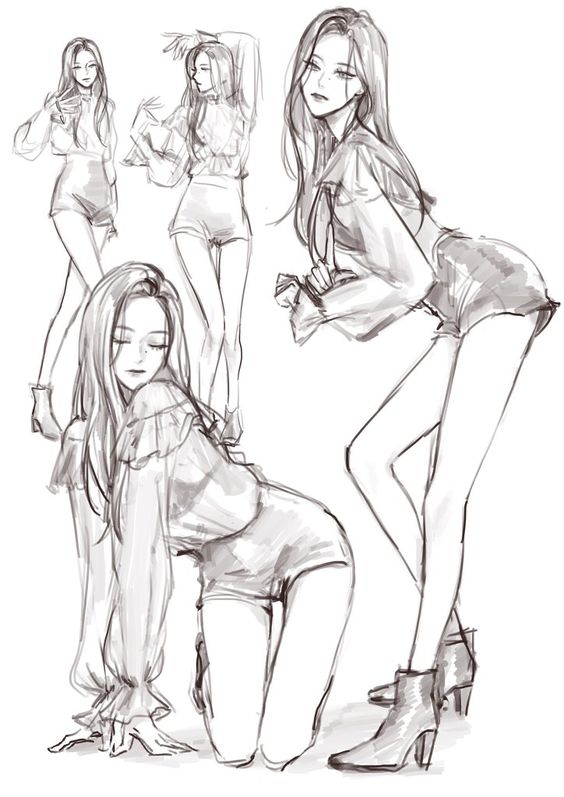
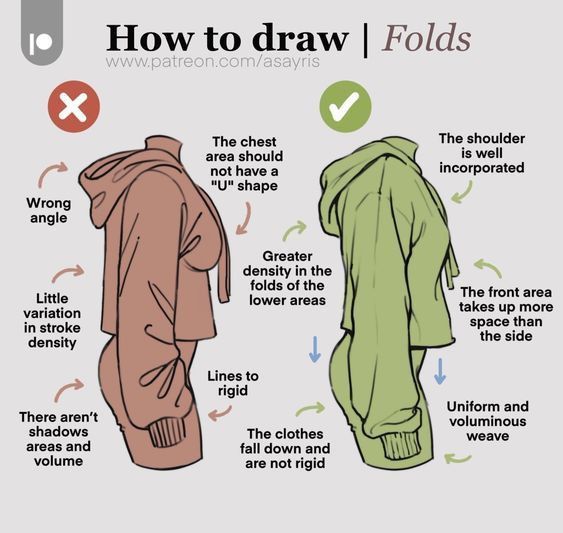
Exploring different clothing styles can bring a character to life. Fashion influences personality and can express emotions.
Casual wear, such as t-shirts and jeans, creates a relaxed vibe. A character in comfortable clothing may appear laid-back and approachable.
Formal attire, like suits or elegant dresses, conveys sophistication. People dressed this way often appear confident and polished.
Athletic clothing, such as tracksuits or gym wear, suggests an active lifestyle. It indicates readiness for movement and energy.
Vintage fashion can tell a story of nostalgia. Characters in retro clothing often evoke a sense of history or classic charm.
By visually representing different styles, artists can highlight unique personality traits. This adds depth and interest to their work.
6. Expressive Faces
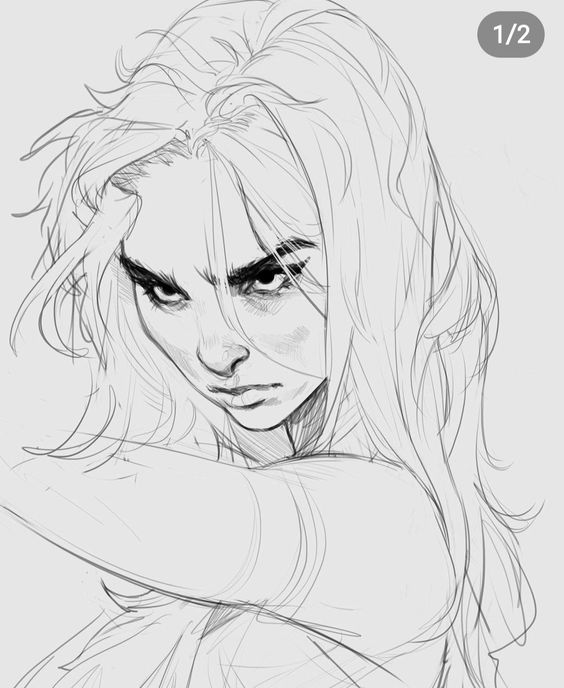
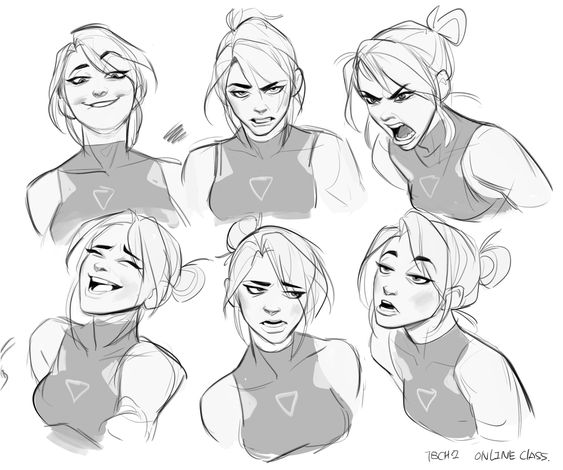
Expressive faces can transform a simple drawing into a compelling story. They convey emotions and capture the viewer’s attention.
She can experiment with different emotions, like joy, surprise, or sadness. Each expression requires unique facial features and techniques.
Pay close attention to the eyes, mouth, and eyebrows. Small changes can significantly impact the overall emotion portrayed.
Using varied facial angles also adds depth. Different perspectives invite viewers to engage with the character’s feelings.
Practicing various expressions helps to create a diverse range of characters. This adds personality and relatability to the work.
Incorporating context into the facial expressions enhances storytelling. This connection draws the audience into the narrative.
Sketching faces regularly can build confidence. It also develops a personal style over time.
7. Muscles and Anatomy Studies
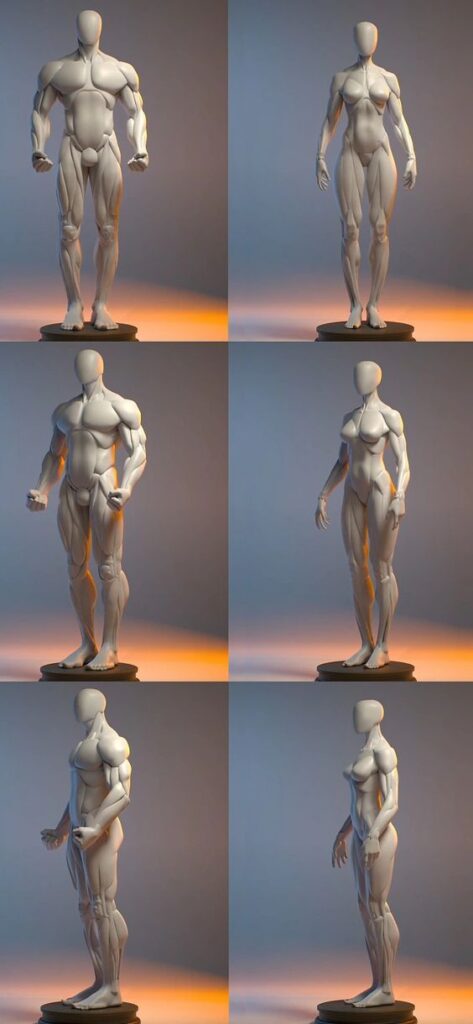

Studying muscles and anatomy is essential for any artist interested in figure drawing. It allows for a deeper understanding of how the body moves and how to represent it accurately.
Artists can benefit from analyzing muscle groups and their functions. This helps them to depict realistic poses and enhance the dynamism of their drawings.
Using anatomy references, such as diagrams or real-life observation, can provide essential support for improved skills. It aids in identifying how muscles affect the surface contours of the body.
Focusing on specific areas, like the torso or limbs, can help artists master proportions and the distribution of muscles. Even simple sketches can clarify how different muscles interact during movement.
Practice is key. Frequent studies of anatomy sketches or live models can significantly improve an artist’s understanding. With time, they will notice a substantial difference in how they portray the human figure.
8. Character Turnarounds
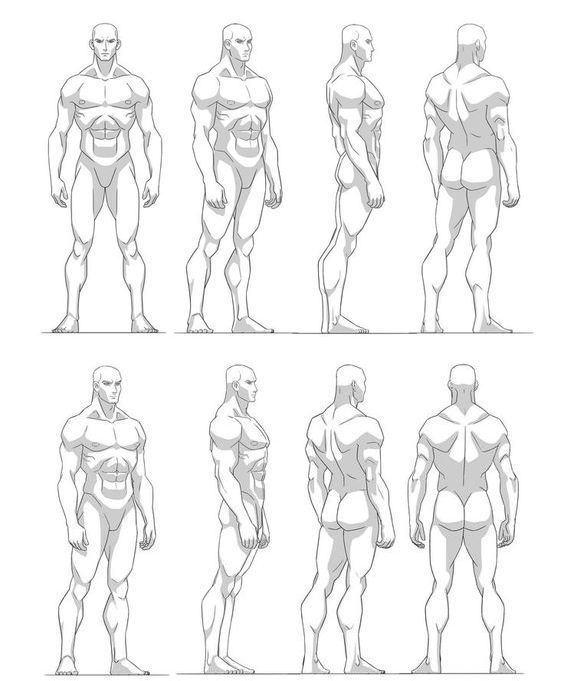
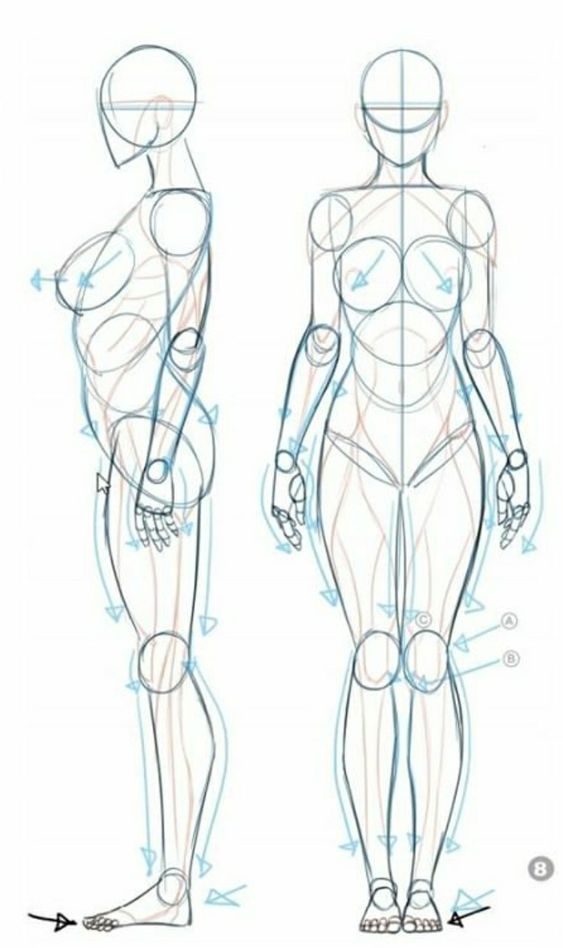
Character turnarounds are a vital tool for artists. They showcase a character from multiple angles, helping to understand their shape and form.
Creating a turnaround generally involves drawing the character from the front, back, and sides. This process emphasizes proportions and features, ensuring consistency across different views.
Turnarounds are particularly useful in character design for animation and comics. They provide a reference for maintaining character integrity throughout a project.
Artists can also include close-up details or expressions in turnarounds. This adds depth to the character’s personality and helps convey emotions effectively.
Practicing character turnarounds builds fundamental skills. It encourages observation and aids in grasping the three-dimensional aspects of character design.
9. Fantasy Creature Bodies
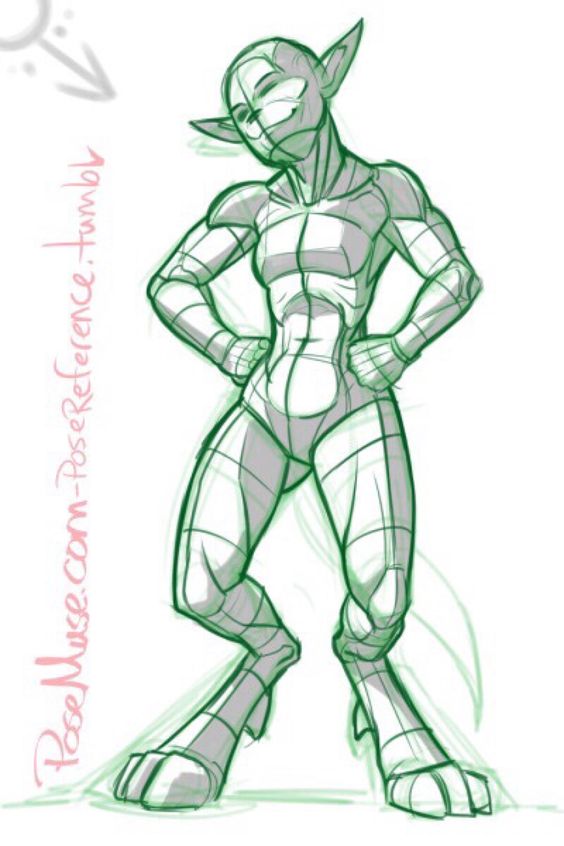
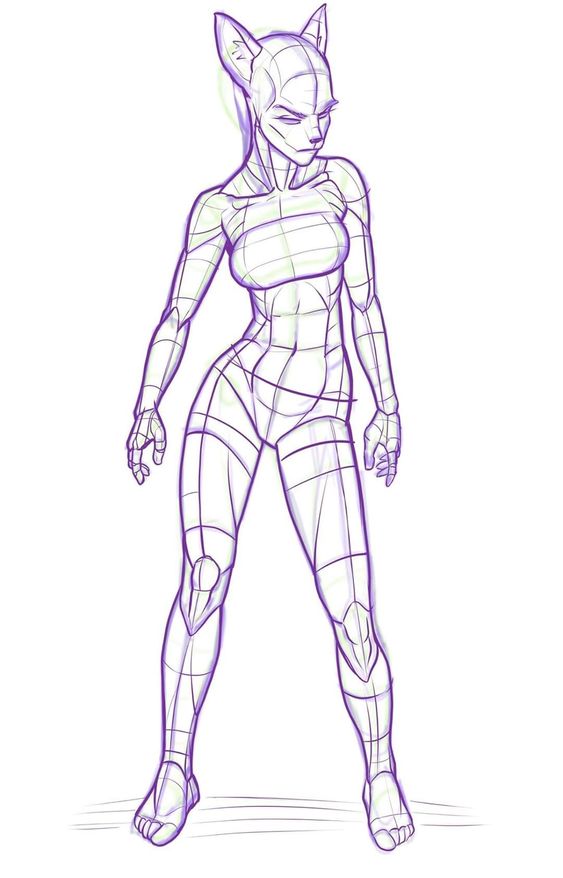
Drawing fantasy creature bodies opens up a world of creativity. Artists can explore unique anatomy and proportions that differ from real-world animals.
Consider dragons with elongated tails, massive wings, and textured scales. Capturing their powerful stance can create a majestic presence on the page.
Mermaids offer another option with their graceful upper bodies and flowing tails. The fluid motion of water can inspire dynamic poses.
Exploring mythical creatures like unicorns brings in elegance and fantasy. Artists can play with flowing manes and shimmering coats.
Hybrid creatures, such as griffins or centaurs, allow for unique combinations. This creates interesting contrasts between human and animal features.
Emphasizing details, like feathers or fur patterns, adds depth to the drawings. Textures can enhance realism, drawing viewers into the fantasy world.
Experimenting with colors can also transform creature designs. Bright scales or ethereal glows can make a drawing stand out.
Using imaginative backgrounds emphasizes a creature’s environment. Whether it’s a lush forest or a mystical cave, the setting enhances the story.
Fantasy creature bodies provide countless opportunities for artistic expression. Each brushstroke can bring a new mythical being to life.
10. Silhouettes and Shapes
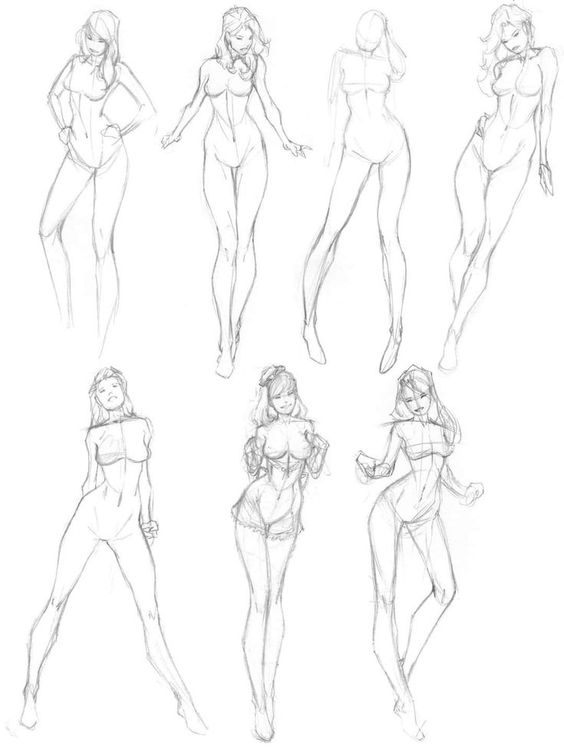
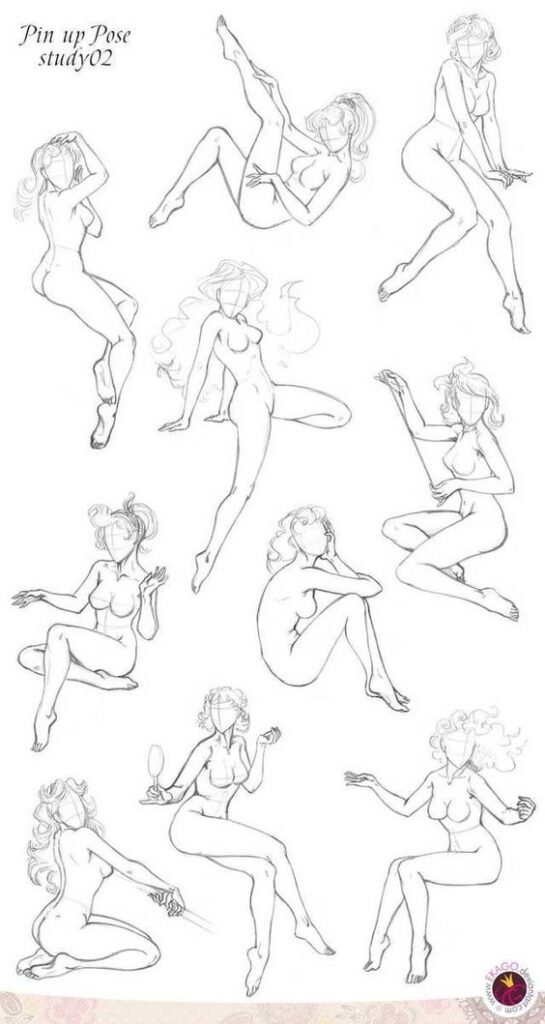
Silhouettes offer a unique approach to body drawing. By focusing on the outline, artists can emphasize form without the distraction of details. This technique captures the essence of movement and posture.
Shapes are essential in breaking down complex forms. Starting with simple geometric shapes can guide the artist in constructing more intricate figures. They can help to visualize proportions and balance.
Playing with negative space enhances the silhouette technique. This involves using the background to define the figure. Artists can create intriguing compositions that draw the viewer’s eye.
Exploring different poses using silhouettes can spark creativity. Varied postures emphasize dynamics and fluidity. This practice helps artists understand the rhythm of human movement.
Using a limited color palette can add depth to silhouettes. Artists often choose bold colors for contrast, making the shapes stand out. This simplicity can lead to striking visual impact.
Understanding Body Proportions
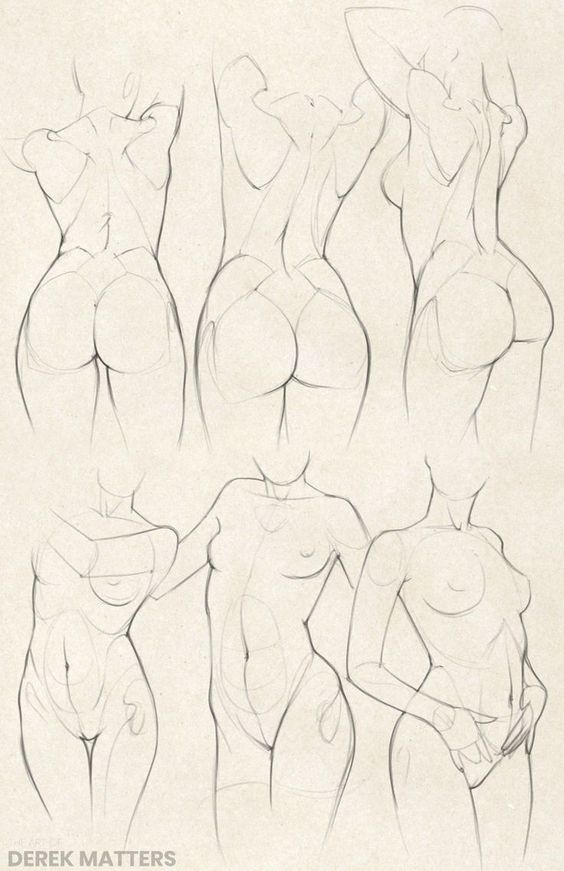
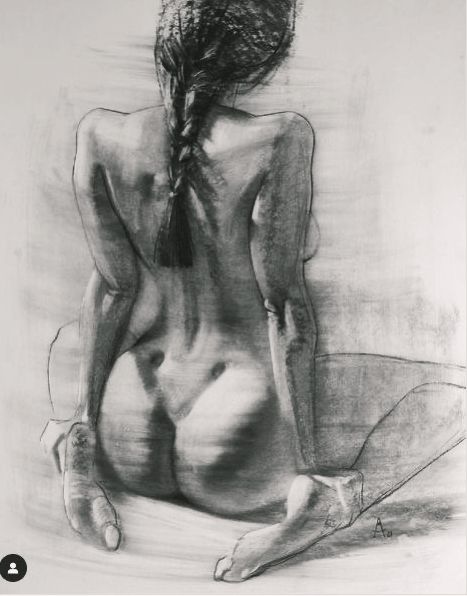
Body proportions are crucial for creating realistic and dynamic figures in drawing. Knowing how to measure and apply these proportions can enhance the overall accuracy and appeal of artwork.
Basic Measurements
Understanding basic measurements can significantly aid in drawing proportions. The human body is often measured in “heads,” where the average adult figure is approximately 7.5 to 8 heads tall.
For example:
- 7 heads tall: Typical for stylized characters.
- 8 heads tall: Common for realistic representations.
Other key measurements include the width of the shoulders, which should be about 2-3 head widths, and the arms, which generally extend to mid-thigh when relaxed.
Using these measurements creates a foundation for accurate body representation, helping artists maintain consistency in their work.
Using Reference Lines
Reference lines serve as a guide for maintaining the correct proportions while drawing. They help to outline the basic structure before adding details.
- Vertical Lines: Establish the height and center of the figure.
- Horizontal Lines: Indicate the shoulder, waist, and hip levels.
By sketching these lines first, artists can ensure the body parts align correctly. It enables quick adjustments to proportion discrepancies.
Consider marking where limbs and features will be to refine placement without erasing too much. This method fosters confidence, leading to more satisfying results in figure drawing.
Capturing Movement
Capturing movement in body drawing enhances the sense of life and energy in artwork. This requires a keen understanding of human anatomy and dynamic posing to convey action effectively.
Gesture Drawing Techniques
Gesture drawing focuses on quick sketches that capture the essence of movement. These drawings are often completed in just a few minutes to emphasize the fluidity of motion.
Tips for Gesture Drawing:
- Use a timer: Set it for 1-5 minutes to maintain speed.
- Start with the line of action: Identify the primary curve or direction of movement.
- Keep it loose: Use swift, flowing lines without getting caught up in details.
Artists should aim for capturing the dynamic posture and balance of the figure. Practicing gesture drawing regularly can significantly improve the ability to depict movement accurately.
Posing Figures Dynamically
Dynamic posing involves arranging the figure in ways that suggest action and energy. Artists can explore various stances and body angles to create interesting compositions.
To create effective dynamic poses:
- Experiment with angles: Tilt the torso or limbs to add tension.
- Incorporate foreshortening: Draw limbs at different sizes to create depth and perspective.
- Use reference images: Study athletes, dancers, or active individuals to understand natural movements.
By focusing on how the figure interacts with space and gravity, artists can bring a sense of realism and excitement to their drawings. Dynamic poses invite viewers to engage with the movement portrayed in the artwork.
- 6.0Kshares
- Facebook0
- Pinterest6.0K
- Twitter0
- Reddit0
